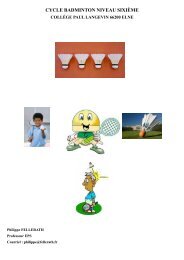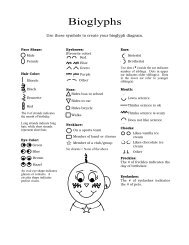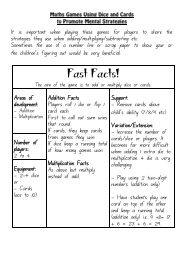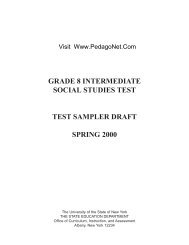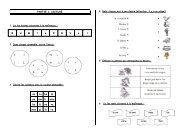You also want an ePaper? Increase the reach of your titles
YUMPU automatically turns print PDFs into web optimized ePapers that Google loves.
<strong>Butterflies</strong> <strong>and</strong> UsLesson TwoAges Primary <strong>and</strong> IntermediateObjective: Students are able to describe Lepidoptera (butterfly <strong>and</strong> moth) anatomy <strong>and</strong>relate it to our own anatomyMaterials:4 kaleidoscopeslabeled butterfly illustration (Figure 3)copies of the butterfly anatomy activity sheet (Activity Sheet 1)Suggested approach:Begin a discussion of butterflies <strong>and</strong> moths. Ask your students to give you examples ofinsects. Explain that butterflies <strong>and</strong> moths are both insects that belong to the same group ororder of insects. This order is called Lepidoptera. Like other insects, butterflies <strong>and</strong> mothshave three major body sections, a head, a thorax, <strong>and</strong> an abdomen.Ask the children if they have those three body sections. Tell them that they have all ofthem. Have the children put their h<strong>and</strong>s on their heads. What do we have on our heads?Have the children point to their eyes, nose, ears, mouth, <strong>and</strong> hair.What do butterflies <strong>and</strong> moths have on their heads? Show them a picture of a butterflylabeled (see attached page).<strong>Butterflies</strong> <strong>and</strong> moths have two eyes. People have two eyes too but each of our eyes onlyhas one lens. This means we only see one picture. <strong>Butterflies</strong> <strong>and</strong> moths have hundreds oflenses on each eye. This means that they see lots of little images. This kind of eye is calleda compound eye. Pass around the kaleidoscopes <strong>and</strong> have the children look through them.Tell them this is how a butterfly sees the world.Fun Fact: Though the ability to see detail is very poor compared to humans, butterflies arecapable of seeing a greater range in the color spectrum from ultra-violet through all visiblelight to infrared wavelengths.<strong>Butterflies</strong> <strong>and</strong> moths have two antennae between their eyes. Point to the antennae onthe picture. They use their antennae to feel <strong>and</strong> smell. What do we use to feel <strong>and</strong> smell?Insects do not have h<strong>and</strong>s <strong>and</strong> noses like we do, so they use their antennae.Point to your mouth. <strong>Butterflies</strong> <strong>and</strong> moths have a different kind of mouth. Their mouth iscalled a proboscis. The proboscis is a long straw-like tube that unrolls from the head whenthe butterfly needs to take either food or water for its liquid diet.Florida Museum of Natural History http://www.flmnh.ufl.edu 10




